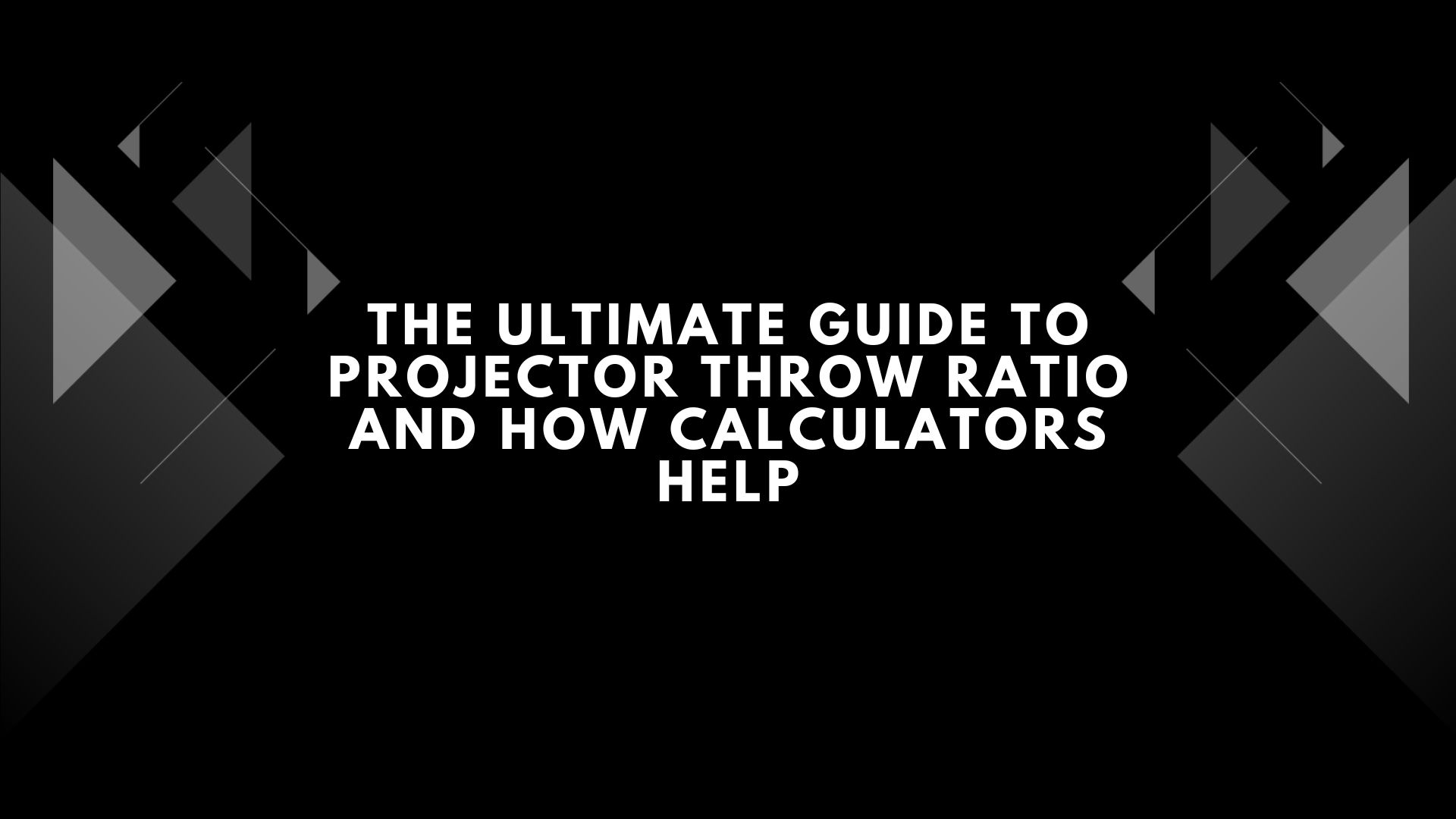When setting up a projector—whether it's for a home theater, a classroom, a conference room, or a large auditorium—throw ratio is one of the most critical specs to understand. It influences where you place your projector, what size screen you should use, and how immersive your viewing experience will be.
In this ultimate guide, we’ll break down what throw ratio really means, how to calculate it, and how tools like a projector calculator can help you make fast, accurate decisions.

What Is a Projector Throw Ratio?
The throw ratio of a projector describes the relationship between the distance from the projector to the screen (throw distance) and the width of the image being projected.
The Formula:
Throw Ratio= Throw Distance / Image Width
So, if a projector is placed 10 feet away from the screen and projects an image that is 5 feet wide, the throw ratio is:
Throw Ratio=10/5=2.0
This means for every foot of image width, the projector needs to be 2 feet away.
Why Throw Ratio Matters in Real Life
Knowing the throw ratio helps you answer key questions like:
How far should I place the projector from the screen?
What image size will I get if I mount the projector on the ceiling?
Can I fit a 120-inch screen in my room without moving furniture or drilling new holes?
Without understanding throw ratio, you risk installing your projector in the wrong location, resulting in blurry images, awkward viewing angles, or blocked beams.
Types of Throw Ratios
Different projectors have different throw ratios, designed for different environments:
1. Ultra Short Throw (UST)
Throw Ratio: Less than 0.4
Best For: Tight spaces, living rooms, classrooms
Pros: Can be placed just inches from the screen
2. Short Throw
Throw Ratio: 0.4 to 1.0
Best For: Small rooms, gaming setups, classrooms
Pros: Minimizes shadows and glare
3. Standard Throw
Throw Ratio: 1.0 to 2.0
Best For: Most mid-sized setups
Pros: More flexibility in image size
4. Long Throw
Throw Ratio: 2.0 and above
Best For: Auditoriums, large venues, outdoor setups
Pros: Clear image from a long distance
How a Projector Calculator Makes It Easy
Manually calculating the throw ratio can get tricky, especially if your projector has a zoom lens or variable ratio range. That’s where a projector calculator comes in handy.
What Does a Projector Calculator Do?
A projector calculator allows you to:
Input throw ratio and screen size to find the correct distance
Input room dimensions to suggest the largest screen size possible
Compare multiple projector models to find the right fit for your space
Simulate installation scenarios before drilling any holes
These tools save time, prevent mistakes, and are essential when planning a professional-grade setup.
How to Use a Projector Calculator (Step-by-Step)
Go to a trusted projector calculator tool (like the one offered by projector brands or AV design software).
Select your projector model (or input throw ratio manually).
Enter your desired screen size (or available wall dimensions).
Get recommended throw distance range.
Use the results to plan mounting locations, screen placement, and seating arrangement.
Practical Examples
Example 1: Small Home Theater Room
Room depth: 12 feet
Projector throw ratio: 1.5
Result from calculator: Ideal screen width = 8 feet
Diagonal screen size: ~110 inches
Example 2: Large Auditorium Setup
Room depth: 40 feet
Throw ratio: 2.0
Result: Ideal image width = 20 feet
Recommended screen size: 240 inches diagonal
Mistakes to Avoid When Calculating Throw Ratio
Ignoring aspect ratio (16:9 vs 4:3)
Measuring from the wall, not the lens
Forgetting zoom lens variability
Not accounting for lens shift or keystone settings
Using diagonal size instead of width for calculations
Additional Tips for Perfect Placement
Always measure from the projector lens to the screen, not the back of the device.
Use the zoom range if available to gain flexibility.
If using a ceiling mount, consider the projector's vertical offset and lens shift options.
For fixed installations, always do a test run using painter’s tape or a laser before permanent mounting.
Conclusion
Understanding the throw ratio is critical for achieving the best image size, quality, and placement for your projector. But doing the math yourself—especially with zoom lenses, large venues, or custom screen sizes—can be overwhelming.
That’s why using a projector calculator is a game-changer. It automates the technical part of your planning process, ensures you don’t make costly mistakes, and helps deliver a professional-grade setup whether you're building a home theater or installing AV in a large hall.
